Door Chris Grinter, op 30 mei, 2010 Voor de zelden terugkerende quiz serie, hier is een nieuwe afbeelding. Wie is deze mot?
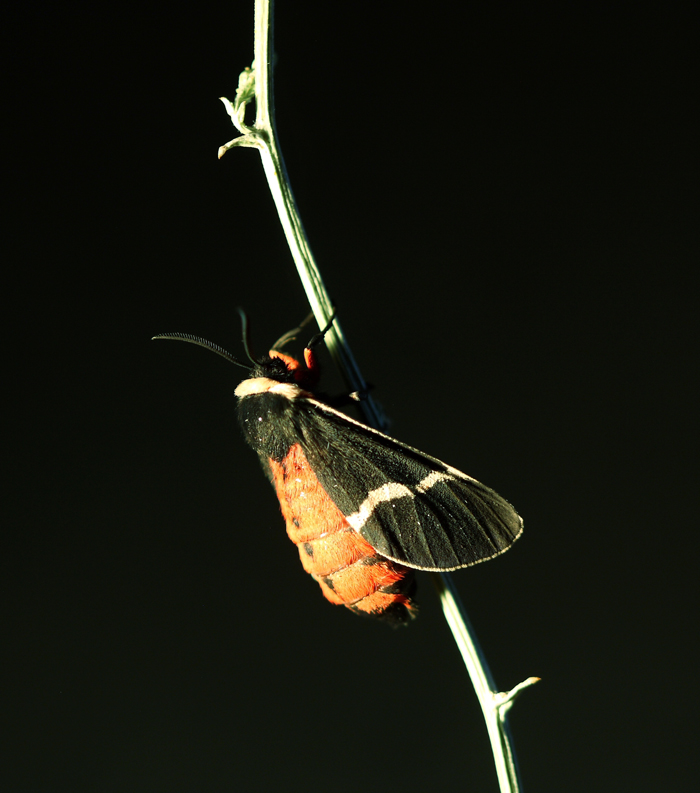
Door Chris Grinter, op 25 mei, 2010 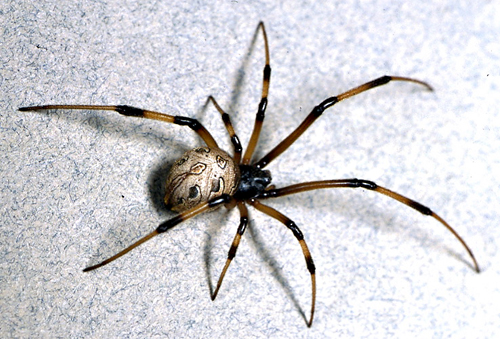
Voor degenen Californiërs lezen, met name in het zuiden, houd een oog voor dit mooie kleine spin, Latrodectus geometricus – de bruine weduwe. Arachnologen bij UC Riverside volgen de verspreiding van deze invasieve soort. Ironisch genoeg blijkt het niet zo gevaarlijk als onze inheemse zwarte weduwe. Toch, het is niet van 'rond deze hier delen' (moet worden gezegd in je beste zuidelijke twang). Als je een exemplaar vindt, vooral als je niet in de provincies LA/Oranje/SD bent, je zou moeten contact het team van UCR.
Door Chris Grinter, op 25 mei, 2010 Met Korea balanceert op de rand van een hete oorlog, een ecologische ramp van ongekende proporties en burgerlijke onrust in Jamaica (iemand harshed hun mellow) – om maar een paar van de hedendaagse krantenkoppen uit andere bronnen te noemen – CNN neemt de tijd om pluis haar voorpagina.

I usually get a little excited when I come across articles like this because I always have hopes for something so ridiculous it has to be discussed. Thankfully CNN is run by teams of drunken marmosets who like to fling crap at us. Before the Skeptical Moth epoch I would share links to cover page stories on the findings of bigfoot, chupacabra and aliens with just a few friends or spread it around facebook. Now I can ridicule CNN on a google archived medium.
I just do not understand the point of this article. John Blake doesn’t discuss an explanation for this phenomenon, offer an opinion, or ask any questions. Zeker, he asks if God really cares who wins, but that question isn’t any more valid than asking if my dog (also fictional) cares what kind of car I drive (unless of course it is psychic! Serieus…people believe this). When I read articles like this I feel as if I am grading papers in a high school english class. There is no journalistic integrity, intelligent opinion or factual basis for the scribbling – there are just pretty pictures and words illustrating them. Setting the whole prayer and faith issue aside; athletes have always been known for their superstitions (another). Het “acceptance speech” phenomenon undoubtedly falls under this category. After achieving a statistically small outcome (zien hot hands), they are afraid of forgetting God in fear of magically losing their ability (not necessarily consciously). For some reason Blake restrains this article to only sports – perhaps he is intentionally playing into the massive demographic of American sports loving, bud-light swilling, christians – but clearly this is a reoccurring theme. At any awards ceremony God, Jesus or Allah is usually at the top of the thank-you list. Forget all that hard work and talent you might have, it was something or someone else. Abandoning all rational thought to a mystical being is a dangerous thing. This mindset is the same one that allows addicts to blame anyone but themselves (even if addiction is in part hard-wired), believe in faith healing, start a holy war, or let the Catholic church blame the devil.
CNN is flashing the lights and jingling the keys over the faces of their readers. Usually I leave it up to FOX news to insult my intelligence, but I am glad to know I have a choice in this market.
Door Chris Grinter, op 24 mei, 2010 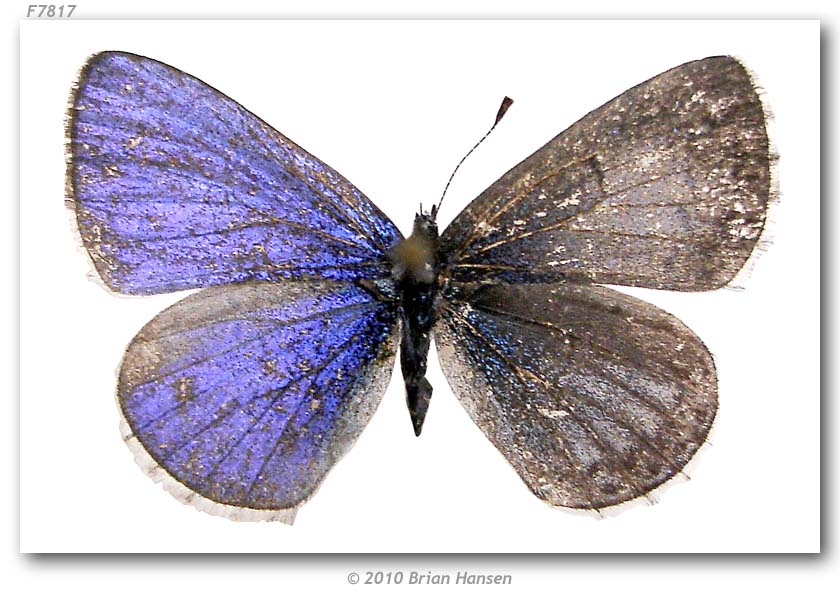
Een once in a lifetime gebeurtenis, een bilateral gynandromorph. In het kort, een glitch tijdens celdifferentiatie creëert asymmetrische chromosoom patronen, wat leidt tot asymmetrische geslacht expressie in de volwassen insecten. Als u nog niet geklikt op de bovenstaande link, doen, het is een uitstekende beschrijving met een aantal geweldige foto's.
Terug naar de vlinder. I was in the field this March just above the middle fork of the American River on the hunt for Xanthothrix, with me was Brian Hansen and Bob Patterson. Bob and I were on a mission, to locate a remote patch of Coreopsis high on serpentine soils, and to find our rare little moth. Brian came along to enjoy the day and explore the butterfly fauna. While Bob and I hiked ahead anxious to see if the days hike would be worth it, Brian stopped frequently to net passing leps. It was probably less than an hour out from the car when we hear form behind us on the trail “Hey guys… I think I just caught a gynandromorph!!!” OK, I was skeptical. Bob and I approached to see Brian holding a little blue in his hand, which unmistakably, was a bilateral gynandromorph. I was blown away. Bob has over 50 years of experience as an avid lepidopterist and has never seen one of these in the wild. To make this feat even more impressive, this small blue butterfly is one of the commonest insects in the American west in the spring. Vandaag, they were puddling in great numbers along the trail, and I hadn’t even stopped to blink at one. Brian just netted a one in a million catch. Perhaps it is the curse of a jaded lepidopterist that will keep me from such once in a lifetime discovery; but I know I will be looking closer at even the commonest butterfly as it wings by me.
So as you can see the butterfly is exactly half male and half female (the right side is female). If you look very closely you can even see a perfect vertical line bisecting the body if the insect (looks like a photoshop edit almost), gynandromorphism after-all is expressed throughout the entire body and even the genitalia are contorted into strange shapes.
The specimen is in Brian Hansen’s personal collection, and you can find the images hosted on the Butterflies of America website.

Door Chris Grinter, op 23 mei, 2010 
Natuurlijk, it was named Phallus drewsii. This comes form the list of the top 10 species named in 2009, nageleefd door Arizona State University (niet een erg goede lijst als 7 van mijn nieuwe soorten waren er niet…). While I tend to avoid phallic and O’Keeffesque botany, this one I couldn’t resist because it was named after someone from my own institution. Dr. Robert Drewes now has a small phallic fungi named after him (with permission). Taxonomy humor at work.
Door Chris Grinter, op 18 mei, 2010 
Has just been posted over at Kevers in de Bush. Ga over en ontdek de nieuwste mot carnaval, een bijeenkomst van blogs die motten zijn te zien in een of andere manier in de afgelopen maand of zo.
Door Chris Grinter, op 18 mei, 2010 Nieuws in uit India, een vlinder fotograaf is ontvoerd. Een lokale park ambtenaar die op bezoek was de noordoostelijke provincie Arunachal Pradesh werd genomen in de nacht door een bende gewapende jongeren-rebellen. Pogingen om hem te vinden zijn gehinderd door het weer en afgelegen terrein. India is recentelijk een van de moeilijkste landen geworden om onderzoek in te doen, en nu worden we allemaal herinnerd aan de voortdurende geschiedenis van geweld. Vaak is het in de afgelegen en wilde delen van een ontwikkelingsland dat zowel een verbluffende biodiversiteit als militante dissidenten herbergt. In Ecuador hield mijn groep een oogje in het zeil voor Colombiaanse FARC-rebellen die mogelijk over de grens zijn verdwaald; gelukkig was het maar een kleine kans dat ze er in de eerste plaats zouden zijn?, en er werd niets gezien. Ik denk dat een van mijn meest aangrijpende veldwerk langs de Amerikaans-Mexicaanse grensstaten en in Mexico zelf is geweest. Drugsrunners schieten je liever dood voordat ze je vragen om uit de weg te gaan, en rondzwervende bandito's waren jaren geleden verantwoordelijk voor de moord op een vriend van een collega in Oaxaca. Niet verrassend, de verleiding van onaangeboorde biodiversiteit blijft ons naar binnen trekken. Blijf veilig in het veld!
Door Chris Grinter, op 5 mei, 2010 Gedurende een lang weekend zal ik buiten te zijn in het veld. Stay tuned voor een ongelooflijke verhalen (geen hype hier…).
Terwijl ik weg van de volgende uit andere uitstekende bloggers:
Continue reading Gone Collecting
Door Chris Grinter, op 5 mei, 2010 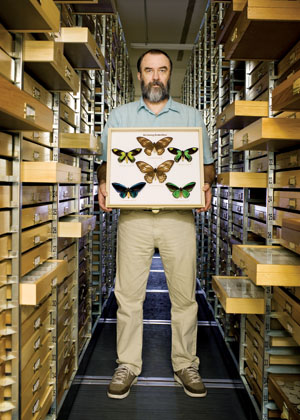 Het is goed om een changeup ieder gooien in een tijdje, and this week here is an article that is actually GOOD. Ja, u het hier eerst gelezen, een positive article about entomology collections. We all need a breather after that Fox news fiasco with the Michigan State collection. The Honolulu Magazine does a really great job (hey… I knew that title sounded familiar… it’s a book by May Berenbaum) and they actually seem to get it. There are some great quotes from Dr. Neal Evenhuis (pictured) and Shepherd Myers; go read about the Bishop Museum’s collections and the awesomeness of being an entomologist on one of the most beautiful places in the world. Werkelijk, Neal, need a curatorial assistant? Het is goed om een changeup ieder gooien in een tijdje, and this week here is an article that is actually GOOD. Ja, u het hier eerst gelezen, een positive article about entomology collections. We all need a breather after that Fox news fiasco with the Michigan State collection. The Honolulu Magazine does a really great job (hey… I knew that title sounded familiar… it’s a book by May Berenbaum) and they actually seem to get it. There are some great quotes from Dr. Neal Evenhuis (pictured) and Shepherd Myers; go read about the Bishop Museum’s collections and the awesomeness of being an entomologist on one of the most beautiful places in the world. Werkelijk, Neal, need a curatorial assistant?
Door Chris Grinter, op 4 mei, 2010
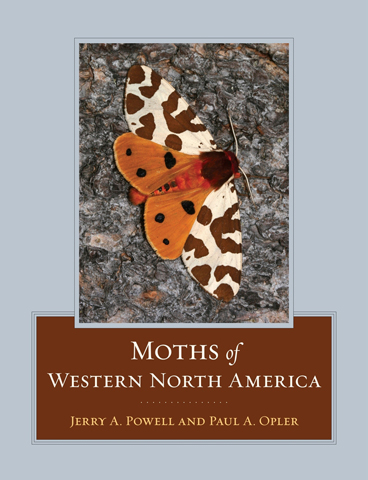
Voor degenen die zich niet bewust, een nieuw boek op de markt aan het eind van vorig jaar. “De Nachtvlinders van West-Noord-Amerika“, Powell en Opler. Op slechts $95 het is elke cent waard (of $75 voor de e-book, maar ik haat e-books). Het is een opmerkelijke Tome en de eerste in zijn soort voor de westelijke staten. Niet alleen is het een spectaculair verwijzing, maar het legt de lat voor alle insecten boeken. Niet Doen, niet elke mot in het westen is daar (dat zou mijn bureau en portemonnee te breken op meer dan 6,000 soorten), maar bijna een van elke soort en gemeenschappelijke of opmerkelijke soort heeft een foto, levensgeschiedenis en distributie. Het belangrijkste is het dekt microlepidoptera. Ik ben opgegroeid op de oostelijke tegenhanger, Nachtvlinders van Oost-Noord-Amerika door Covell. Ik had twee exemplaren, één voor het veld en één voor mijn bureau – en moest het veld kopie ten minste een keer te vervangen. Het was een geweldig boek, maar Powell en Opler hebben rondjes rond het uit te voeren.
Het andere goede nieuws is dat je kunt nu al toegang 1,228 mot illustraties en bijbehorende gegevens online gratis. Ga naar CalPhotos en zoek naar Powell, of klik hier. Het leuke hiervan is het iets kleiner microlep foto's in het boek zijn beschikbaar in hoge resolutie voor een betere identificatie. Mooie aanvulling op de verwijzing en gemakkelijker dan het versturen van iedereen een CD.
|
Scepticisme
|









